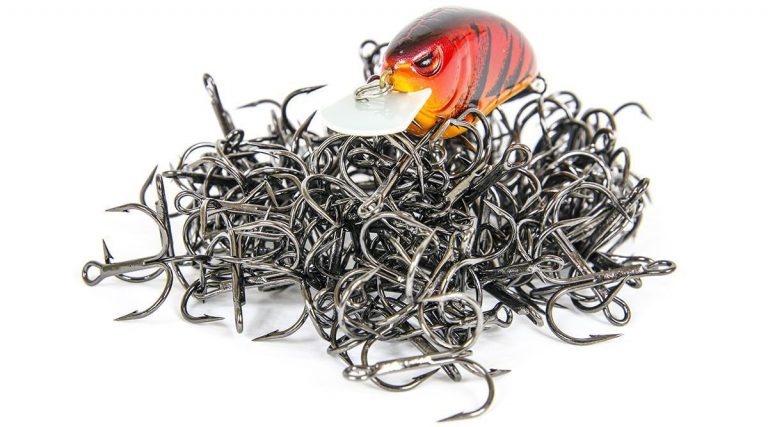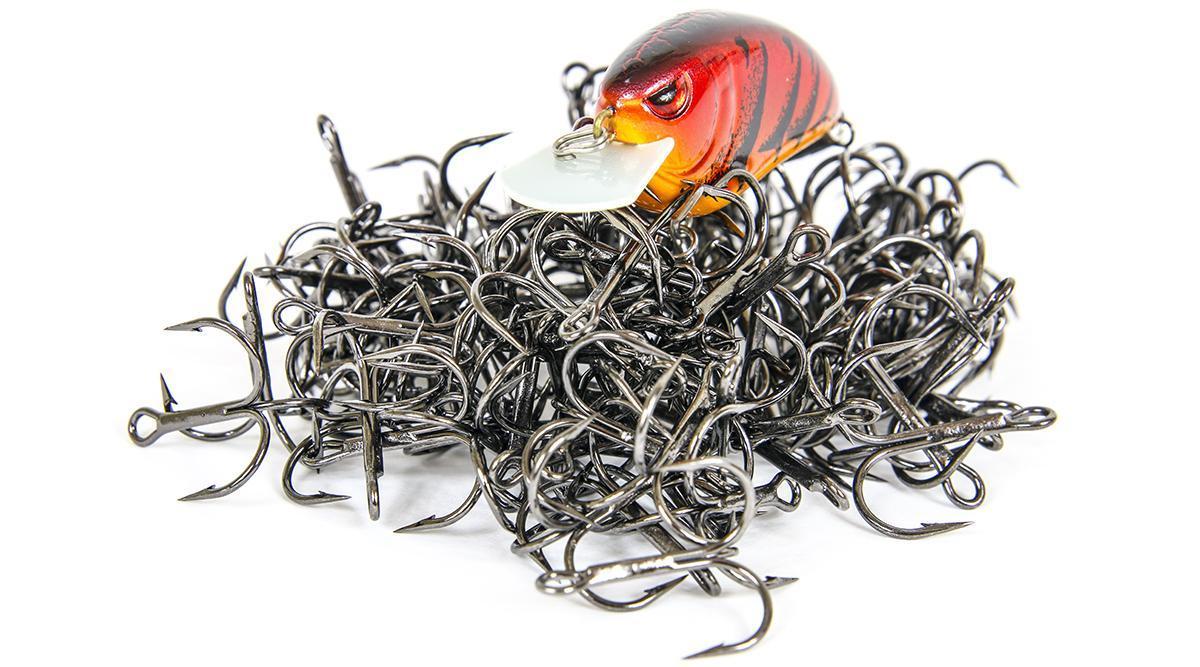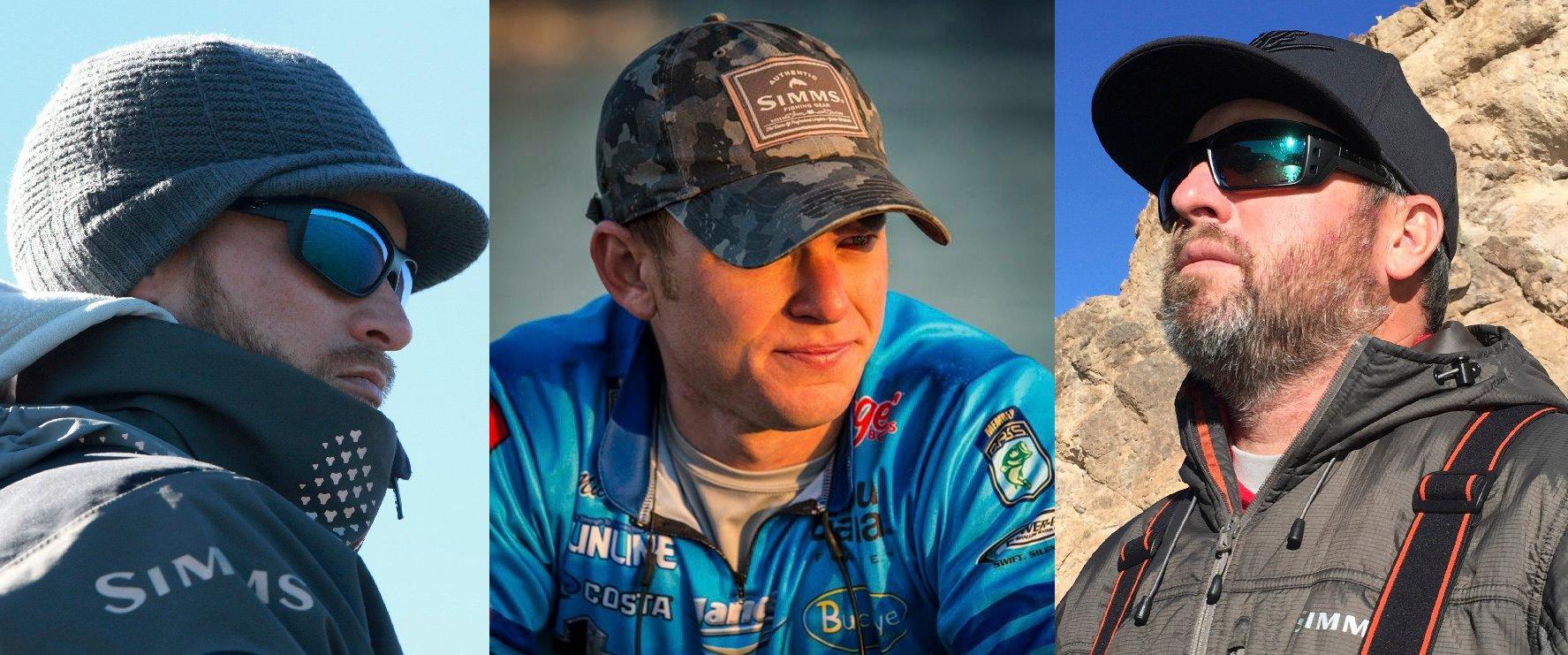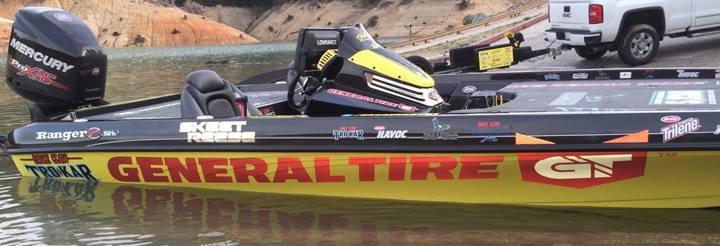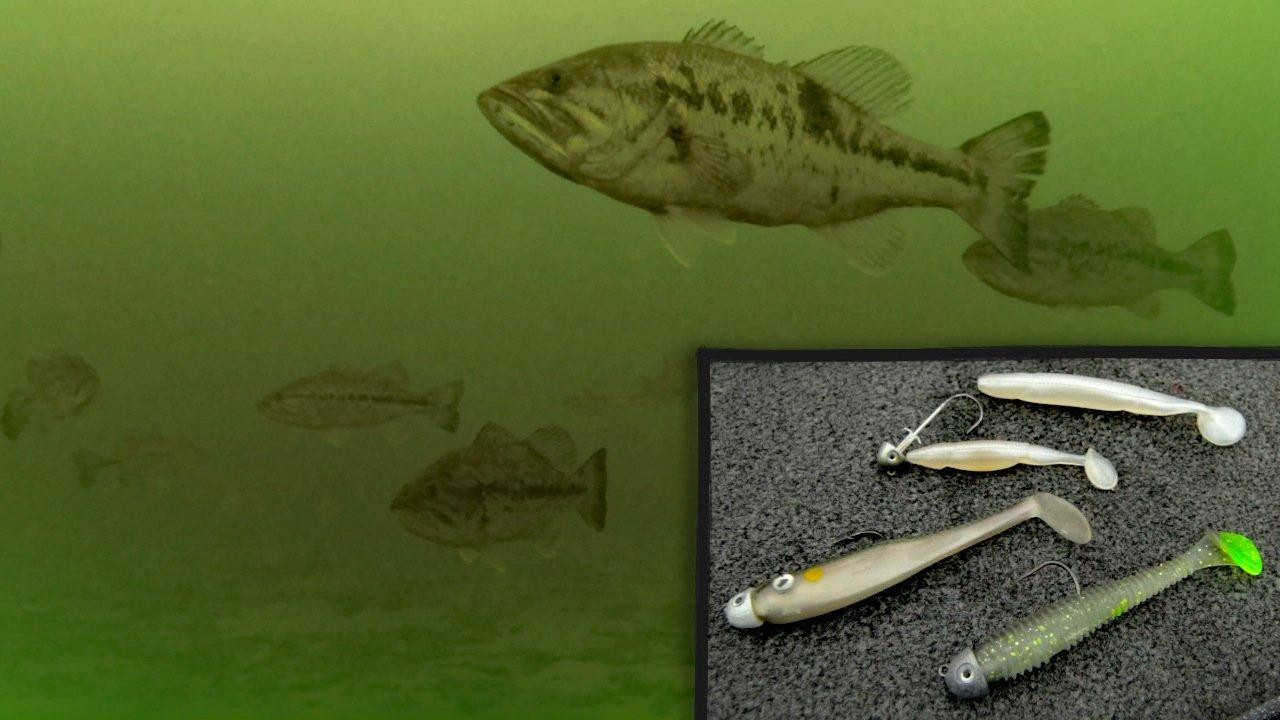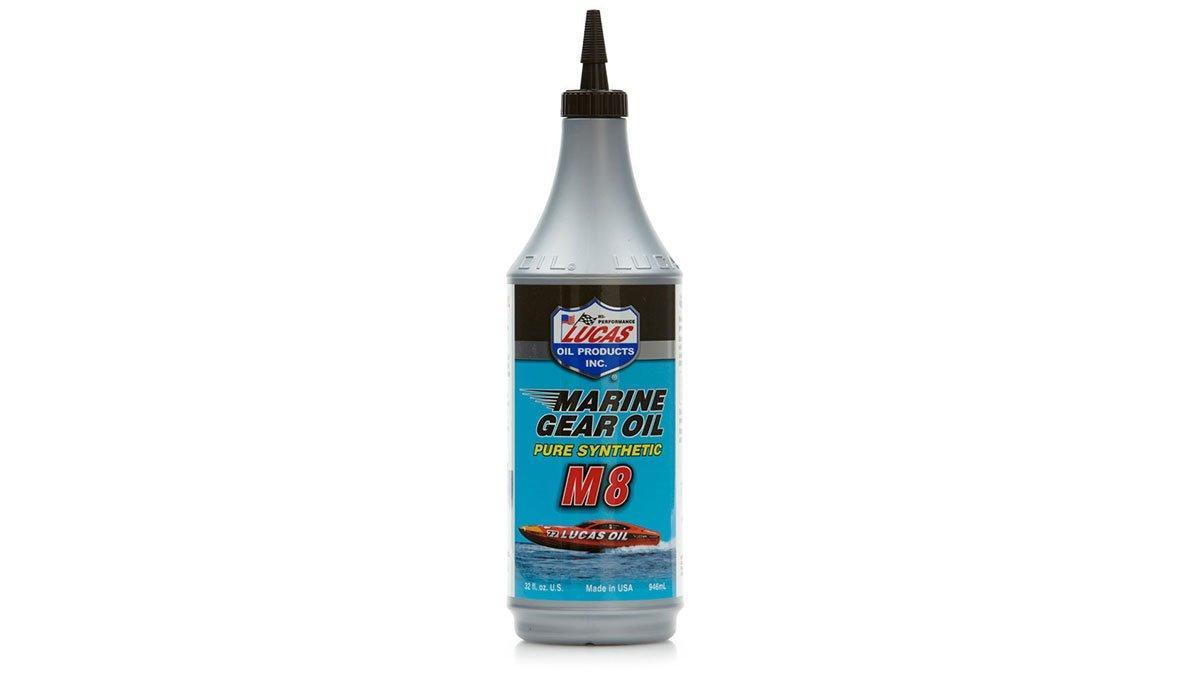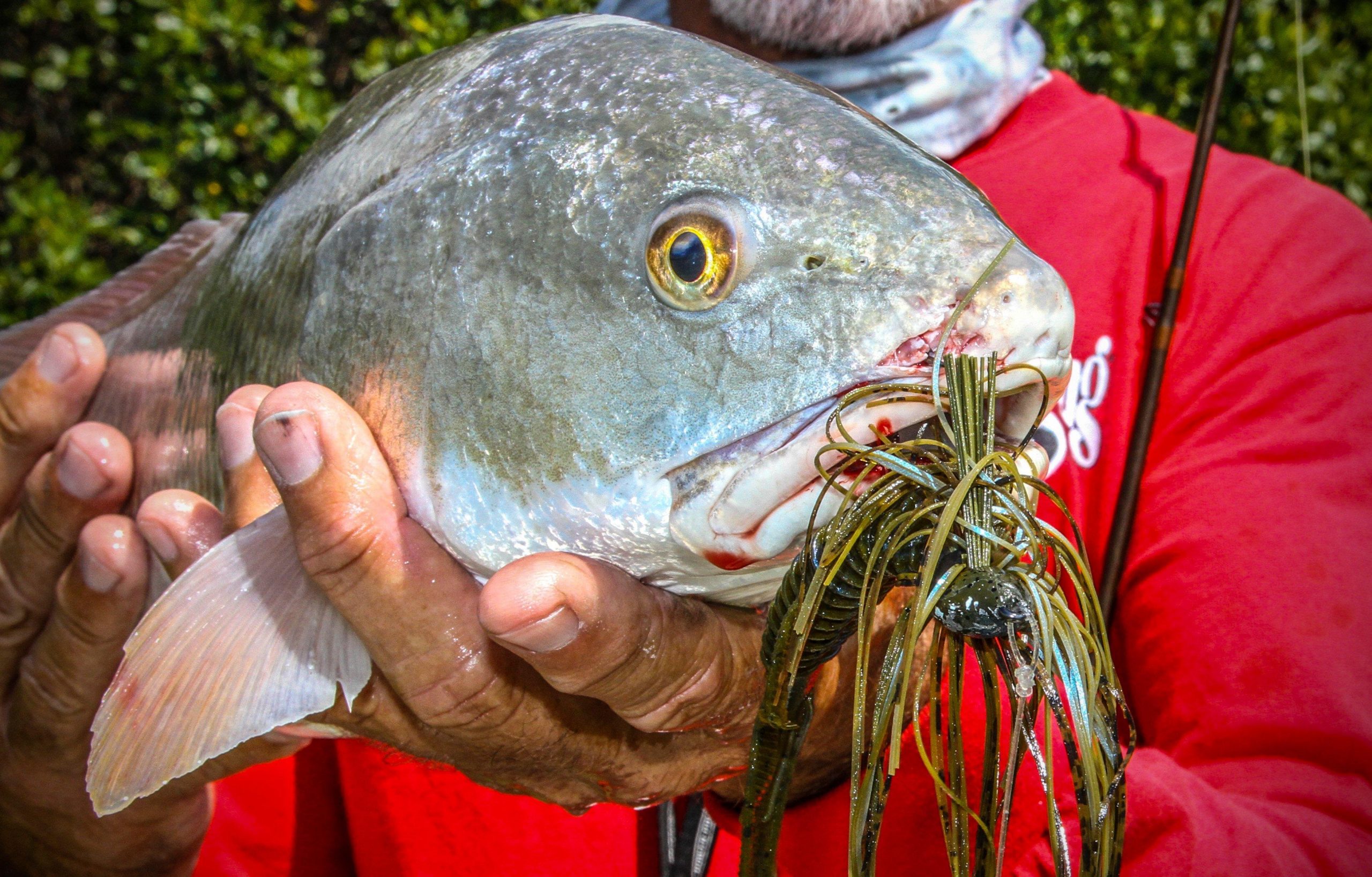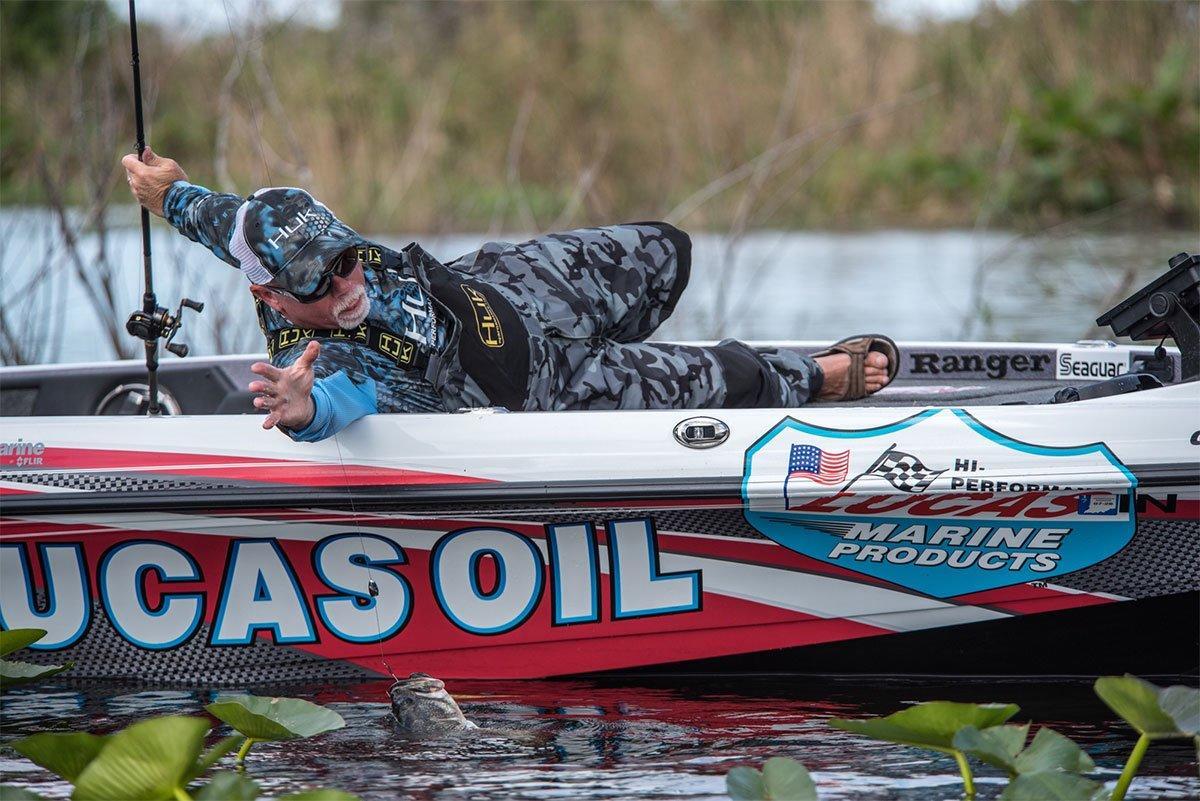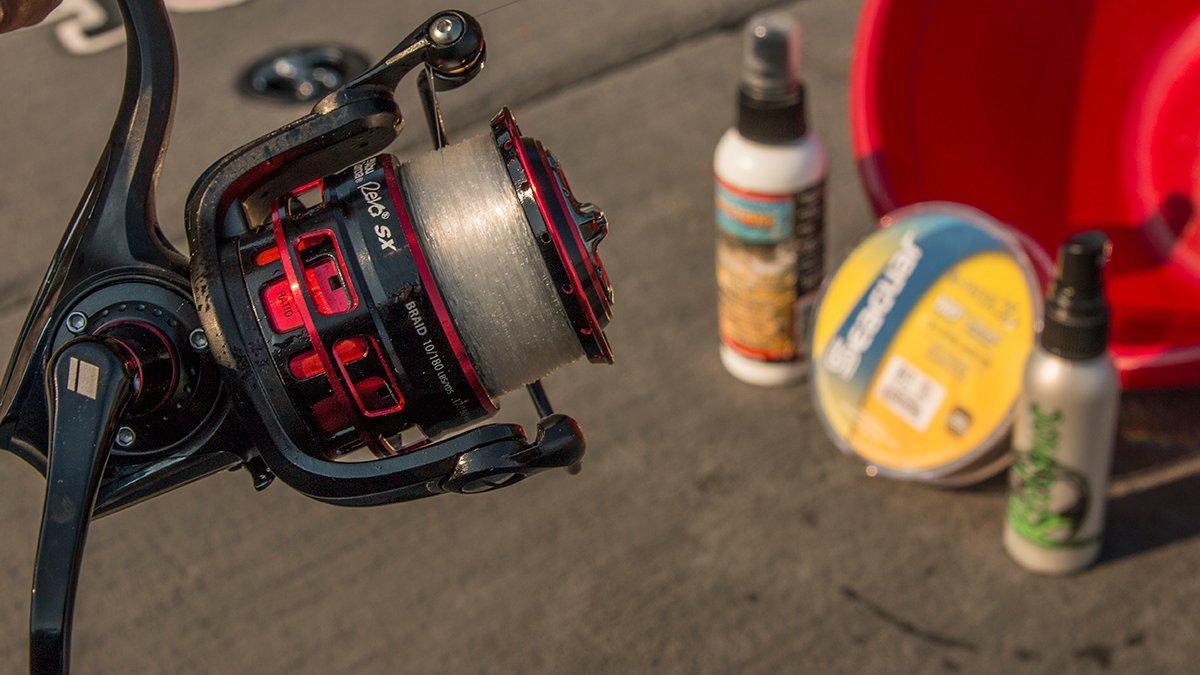Changing bait size, color or action based on the scenario—that’s elementary in bass fishing. A hook change, however, can bolster your performance in many aspects..
Some manufacturers invest more than others in their hardware, but taking a lure directly from the box to the water may not be the best move.
“I always upgrade from stock to premium hooks like Gamakatsu,” said Bassmaster Elite Series pro Brent Ehrler. “Stock hooks are often price-point related, semi-sharp fish losers.”
Indeed, familiarizing yourself with your favorite lure’s components will help you decide when and what changes may be helpful. Besides quality, a few other variables merit consideration.

Change hooks to change sink or float rates
Going lighter or heavier on hooks influences sink rates and that’s particularly significant with jerkbaits. Perhaps you need that slow sinker to descend a little more slowly or suspend; maybe your suspending bait needs to reach a couple of feet deeper.
With his Strike King crankbaits, Texas pro Phil Marks always go up at least one, if not two sizes larger to achieve a bigger “bite” (distance from hook point to the bend). He’ll also use 2x strong trebles to ensure they don’t flex with big fish.
Experimenting with different hooks and blending some adhesive lead dots or strips — or lead wire wrapped around hook shanks — will get you dialed in for the right presentation.
Elite pro John Crews cautions against overburdening a bait with too much weight. Hook size and wire gauge sometimes affect a bait’s performance, so check altered models in a pool, or in clear lake water to make sure you haven’t altered the performance.

Change hooks to make more space
Because manufacturers select stock hooks based primarily on bait size, substituting larger hooks can cause proximity issues. Western pro Ken Mah addresses this point.
“I like short shank treble hooks because they allow me to upsize my crankbait hooks without them catching one another by swinging together,” he said.
Marks further combats the hook grabbing hazard with a hardware adjustment.
“I use smaller split rings (than the stock size) because this keeps the hooks closer to the bait and keeps them from tangling, he said. “Also, shorter shank hooks and smaller split rings keep my bait more compact.”

Change hooks to modify how they stick and hold
Crews chooses his hook style based on what he’s trying to accomplish, or prevent.
“You need to know when you need more penetration,” he said. “Round bend trebles have more penetration, so they are better when the bass’ mouth is a little harder, as is the case in colder water.
“In warmer water, you might go to an extra wide gap (EWG) hook, since they have so much holding power but don’t penetrate like round bends.”
Round bend trebles are Ehrler’s choice for topwaters and jerkbaits — two lure types that often show a bass’ indecisive side.
“I feel like the round bend is better for short strikes,” he said. “It’s such a fine and sticky hook, that when fish nip at it, they hang themselves.”
Ehrler’s fond of short shank EWG (heavy wire) hooks for fishing around cover. The stout trebles, he said, allows him to horse a fish without bending a hook.
“If the fish are eating a bait deep or really well, I like to use EWG hooks, as I feel when I hook them, the landing percentage is higher,” Mah said. “I think because I tend to loose more fish on a crankbait, so the EWG helps trap them better.”
Change hooks to add color or flash
Elite pro Casey Ashley always has at least one red hook on his trusty poppers. This, he said, gives the fish a move visible target point and seems to increase his hookup ratios.
Elsewhere, topwater legend Zell Rowland knows that adding a “dressed” treble to the rear of his Booyah Boss Pop gives the bait a lifelike “breathing” action that followers can’t stand. Contracting when pulled and expanding/flaring when paused, these accents tease and taunt a fish into biting.
FLW pro Scott Suggs also likes the physics of a feather. “When a fish comes up to eat a topwater, a lot of times, they’ll actually push it out of the way and miss it. But that feather creates drag on the bait and sometimes, that allows them to get it.”

Drive it home
An important complement to hook choice is rod selection, and Marks cautions anglers to make sure your hooks have time to do what they’re supposed to do.
Specifically, he goes to a stiffer Power Tackle cranking rod for shallow crankbaits because this allows him to come tight on the fish faster.
When a fish bites a crankbait and quickly realizes it’s a mistake, its next move is to grab some air and do his best to send that bait flying back toward you.
As Marks points out, the immediacy of shallow water means the fish often launches its bait-shaking tirade before the hooks have actually penetrated, as opposed to deeper water, in which you’d have a few seconds to reel into the fish and stick those barbs.
Bottom line, the faster you come tight on those shallow fish, the greater your chances of putting them in the boat.




